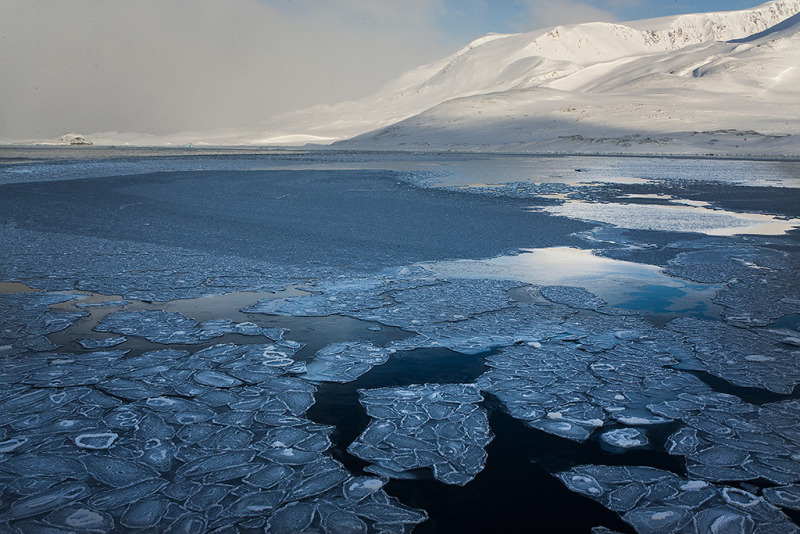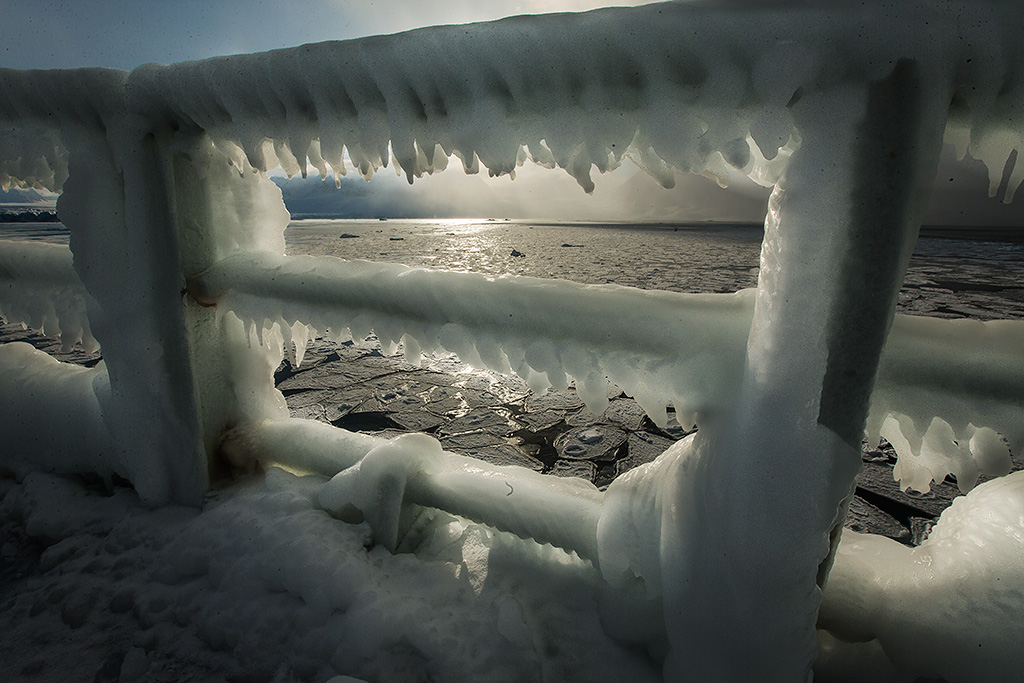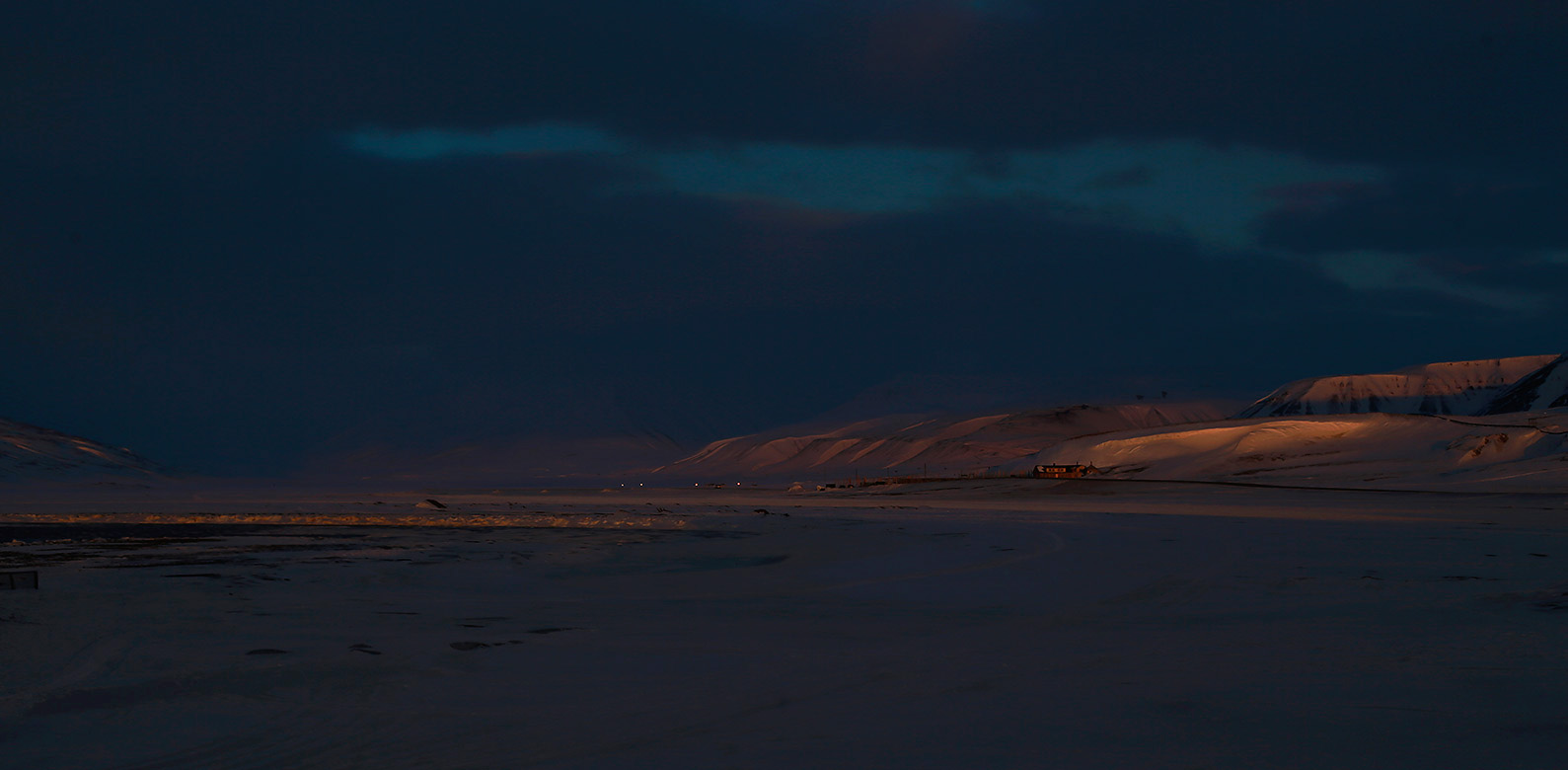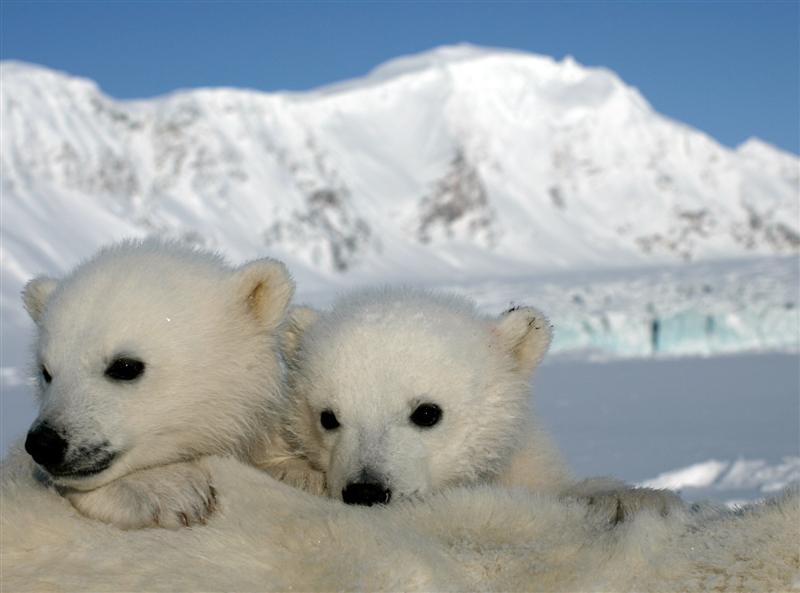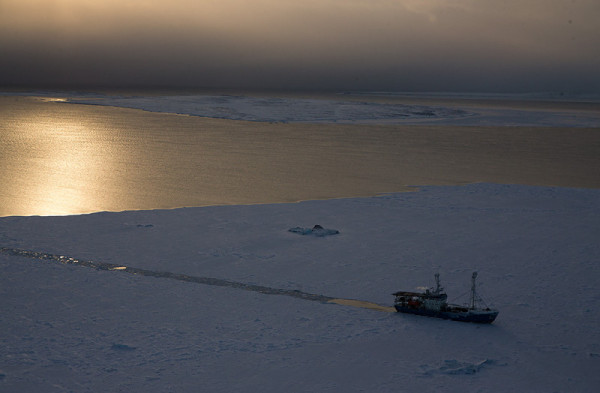
The world is not as it used to be
From April 11 to 21, 2014, join a Norwegian Polar Institute and WWF-Canon scientific expedition to collect critical data about Europe’s most westerly polar bear population. The population on and around the Norwegian Arctic archipelago of Svalbard is facing a future without summer sea ice. See all posts from the expedition here.
I remember when I visited Svalbard for the first time, it was more than 20 years ago during summer, we had a hard time with the ship going up the west coast of Svalbard due to sea ice. Today, the sea on the west coast of Svalbard does not even freeze in winter, despite temperatures far below minus 30 degrees Celsius.
Before, it was possible to cross fiords and bays with skidoos close to the settlement Longyearbyen. Today you have to drive along the shore with the skidoo and what before took ten minutes takes hours, due to lack of sea ice.
These dramatic changes in sea ice distribution are close to Hopen Island. This was the best denning area for the polar bears. It was here that polar bears came ashore in late autumn when the sea ice froze to dig a den in the snow. During the last few years, the freezing of the winter sea ice has been more and more delayed and fewer polar bears managed to get ashore, while the ice edge was too far away.
The ones which did land on Hopen ran into a huge problem when they came out of the den with their cubs. This is the time of the year when ringed seal pups – the main diet for polar bears – are found on the ice. So, when the mothers and her cubs came out of the den they encountered an open sea and were literally stranded. The sea ice was already gone and with it the ringed seal pups.
Magnus is a polar bear scientist who works for the Norwegian Polar Institute and has twenty years experience in the area. Magnus says he has never seen anything like this year. Even fiords and large bays in northern Svalbard have not frozen and where there is ice, it is so thin that the researchers can not work there without the risk of breaking through the ice.
To get to the thicker sea ice we have to head to northeastern Svalbard – above 80 degrees North, far above the Arctic Circle. Here we hope to find fast sea ice and hopefully lots of polar bears. This area was in fact out of bound not long ago due to heavy sea ice conditions in the summer time. Now we are going there in winter. The world is not as it used to be, and the sea ice melt goes incredibly fast.
It is sometimes hard to notice gradual changes, but here in Svalbard, the change is dramatic. The rich ecosystems that have evolved around sea ice might disappear, not too long into the future.

